Why ‘Contagion,’ out in 2011, accurately foretold coronavirus pandemic
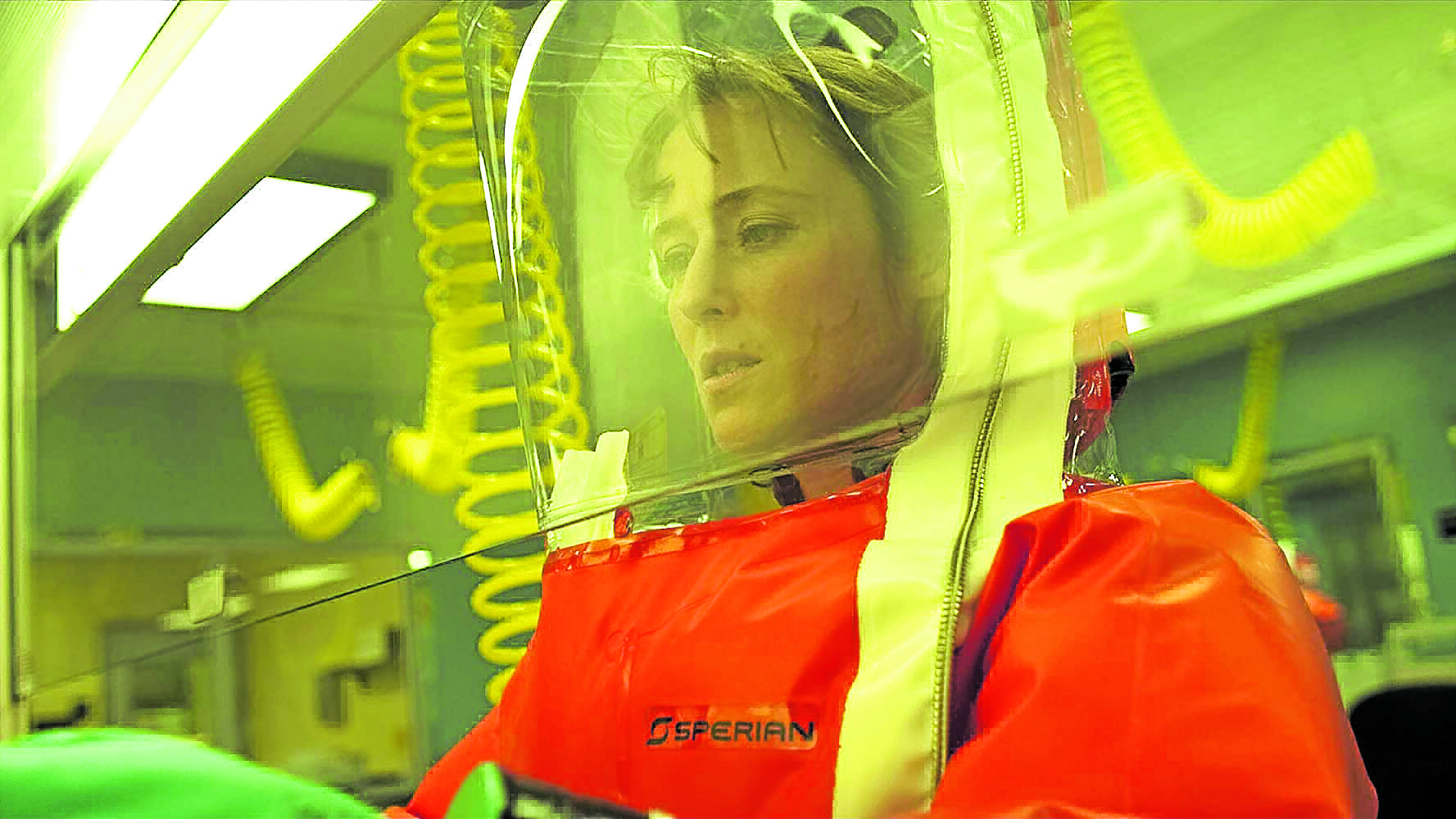
Jennifer Ehle—PHOTOS COURTESY OF WARNER BROS.
LOS ANGELES—Why is “Contagion,” released almost a decade ago, so eerily prescient of the coronavirus pandemic now gripping the world? How did the filmmakers come up with striking similarities to the outbreak that has managed to cripple virtually the entire earth?
Just consider the parallels in both the film, which was out in 2011, and the coronavirus pandemic: both outbreaks originated probably from an infected bat. The virus in both movie and the 2020 real-life health crisis killed millions of victims who suffered from flu symptoms. Social distancing and disinformation come up in the film as they do now in this coronavirus era.
Director Steven Soderbegh’s eerily accurate foretelling of the COVID-19 crisis, starring Matt Damon, Kate Winslet, Jude Law, Marion Cotillard, Gwyneth Paltrow and Laurence Fishburne, is a hit again as a result of its uncanny prescience. The nine-year-old drama is climbing up the charts, trending on Amazon Prime Video, iTunes Top 10 and on-demand streaming services.
In this vein, we recently interviewed, via video conference, two key figures involved in making “Contagion”: screenwriter Scott Z. Burns and Dr. Ian Lipkin, the film’s chief scientific consultant.
Ian, who is the director of Columbia University’s Center for Infection and Immunity, recently revealed that he tested positive for Covid-19, the disease caused by the coronavirus. Larry Brilliant, whose work with the World Health Organization helped eradicate smallpox, and Ian, who is played in the movie by Elliott Gould, are credited by Scott for helping make “Contagion” realistic and accurate.
Article continues after this advertisementScott’s other screenwriting credits include “The Bourne Ultimatum” and “The Informant!,” both of which also starred Matt and were directed by Steven.
Article continues after this advertisement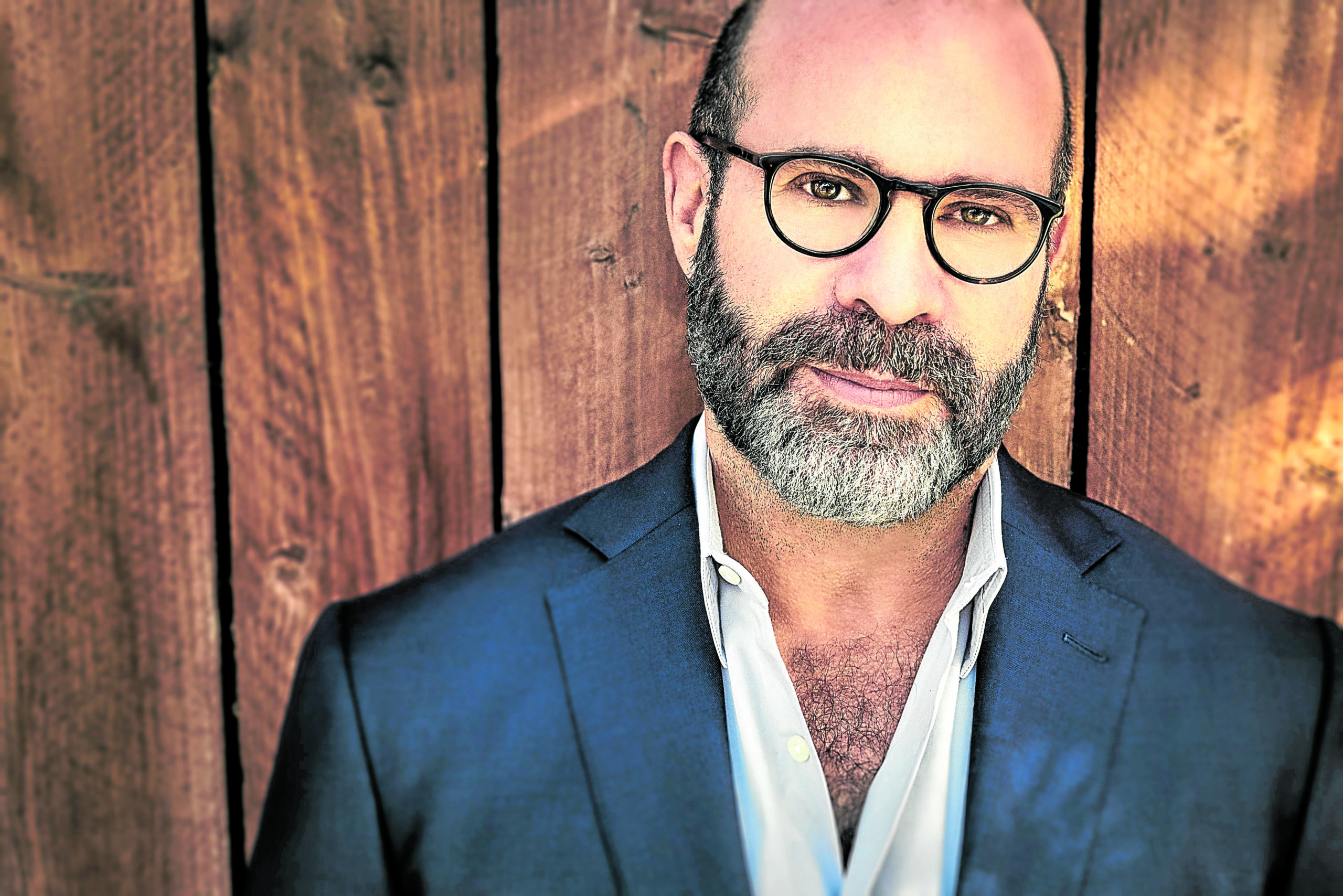
Scott Z. Burns, “Contagion” screenwriter
Excerpts of our interview with Scott (S) and Ian (I), who were in two separate locations:
Dr. Lipkin, you tested positive for Covid-19. Can you talk about it?
I: It’s a very unpleasant disease, I can tell you that. You have high fever. A cough that doesn’t remit for two weeks. I had a headache that was one of the worst headaches I have ever had. I have lethargy, fatigue. There was one day that I had shortness of breath—that was quite worrisome.
In hindsight, why do you think “Contagion” predicted the coronavirus pandemic so accurately?
S: The response is very simple, which is, when I pitched the movie to Steven Soderbergh, I said, “I only want to do this if it can be accurate and fact-based because I had some awareness that we are in an age of pandemics.” So I was able to get in touch with Ian, who is the best virologist we have in our country.
Ian said the same thing to me, which is, “I will only help you on the movie if it’s very fact and science-based and not some sort of conspiratorial bullshit about a virus coming from a lab or a cellphone tower.”
The reason that I knew this was going to happen was because I spoke to people like Ian, who had been trying to stop the virus in this country and all over the world.

Dr. Ian Lipkin, the movie’s chief scientific consultant, has tested positive for COVID-19.
Dr. Lipkin, what is the update on controlling the spread of the coronavirus?
I: We found the virus at the end of December 2019. We have a diagnostic test for it. We don’t have enough of them, although we can actually control the spread. Those countries where there’s been success in controlling the pandemic—Germany, Singapore and China, believe it or not—have access to these tests and have been using them quite successfully.
We, in the United States, have been behind. The same thing happened in Italy, Spain and elsewhere. We’re using old techniques—isolation—this is the sort of thing we used in the Middle Ages to control a plague. Until we have a vaccine or drugs that everyone can take that are oral and inexpensive, we are limited in what we have.
It’s going to be isolation, testing, tracing, finding people who have come in contact with individuals who are infected and isolating them.
What needs to be done?
I: We go back to the mid-2000s when we had SARS and George Bush set up something called National Biosurveillance Advisory Committee that provided specific guidance on how to avoid these particular outbreaks. Then, Obama came in and founded yet another one that made a report that no one paid any attention to.
Our social services are poor, our Centers for Diseases Control has less funding than it needs. Our budget for science continues to drop, at least in terms of real purchasing power. There aren’t enough people and resources to do what they need to do.
The lack of epidemiology, lack of good tests, lack of funding for people who are near the poverty line so that they can safely isolate—these are all things that threaten us all, not only as a local culture, but also internationally.
And the finger pointing now at China, it doesn’t help. They have been far more transparent with us than they were in 2003, when I was actively involved in SARS.
When the National Biosurveillance Advisory Committee came out with the report in 2010, it was designed, in fact, to address all the shortcomings, problems with the communication.
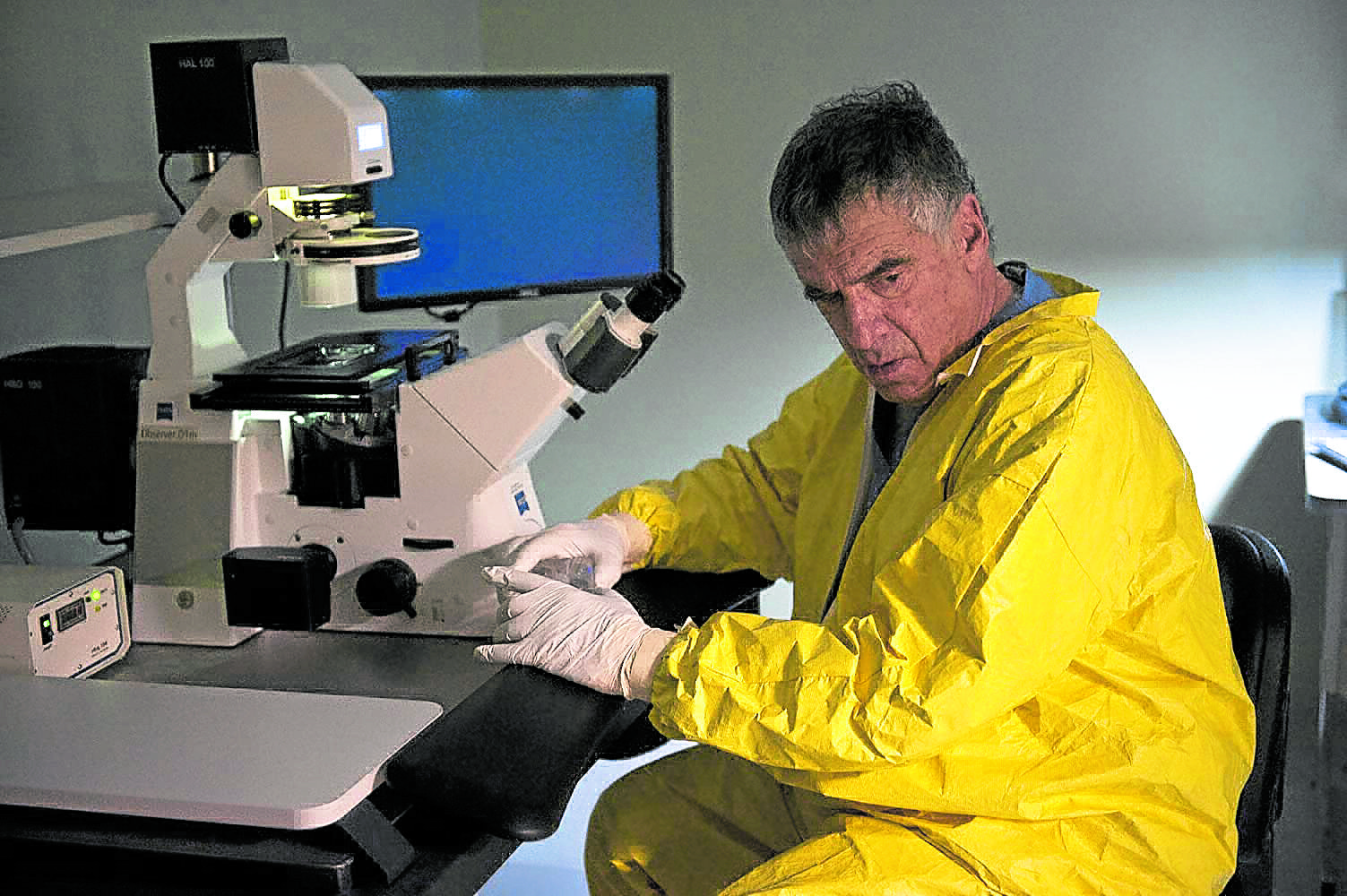
Elliott Gould plays a character based on Dr. Lipkin.
Scott, when you were making the film, did you ever imagine that you would be living through that experience yourself?
S: Having been friends with Ian now for a decade, I’m aware of his work on SARS and MERS. The virus that we chose in “Contagion” is a paramyxovirus. It’s different from a coronavirus. But I do remember having conversations with Ian about the need to develop at some point a universal coronavirus vaccine.
Dr. Anthony Fauci, the director of the National Institute of Allergy and Infectious Diseases, said that we don’t make the timeline; the virus makes the timeline. How do you envision the route back to normalcy?
I: Tony is a good friend of mine. I’m just going to make a slight twist on what he said. We do in part determine the timeline because we can flatten the curve for isolation. We can improve testing. We can accelerate the advancement of drugs and vaccines. So, to some extent, we are the masters of our own destiny.
I am working very closely now with Steven Soderbergh in ways we can go back (in the movie industry) to our normal world safely. But the idea would be that we would do testing before people come on set, so we can make sure that they are safe. We would find ways to mitigate risk by frequent use of gloves. Makeup would be individual. These sorts of things.
If you are asking about the culture as a whole, we will be moving back to those experiences that are not crowded.
But we are not going to move back to where we were a year ago until we have a vaccine and that vaccine is widely deployed.
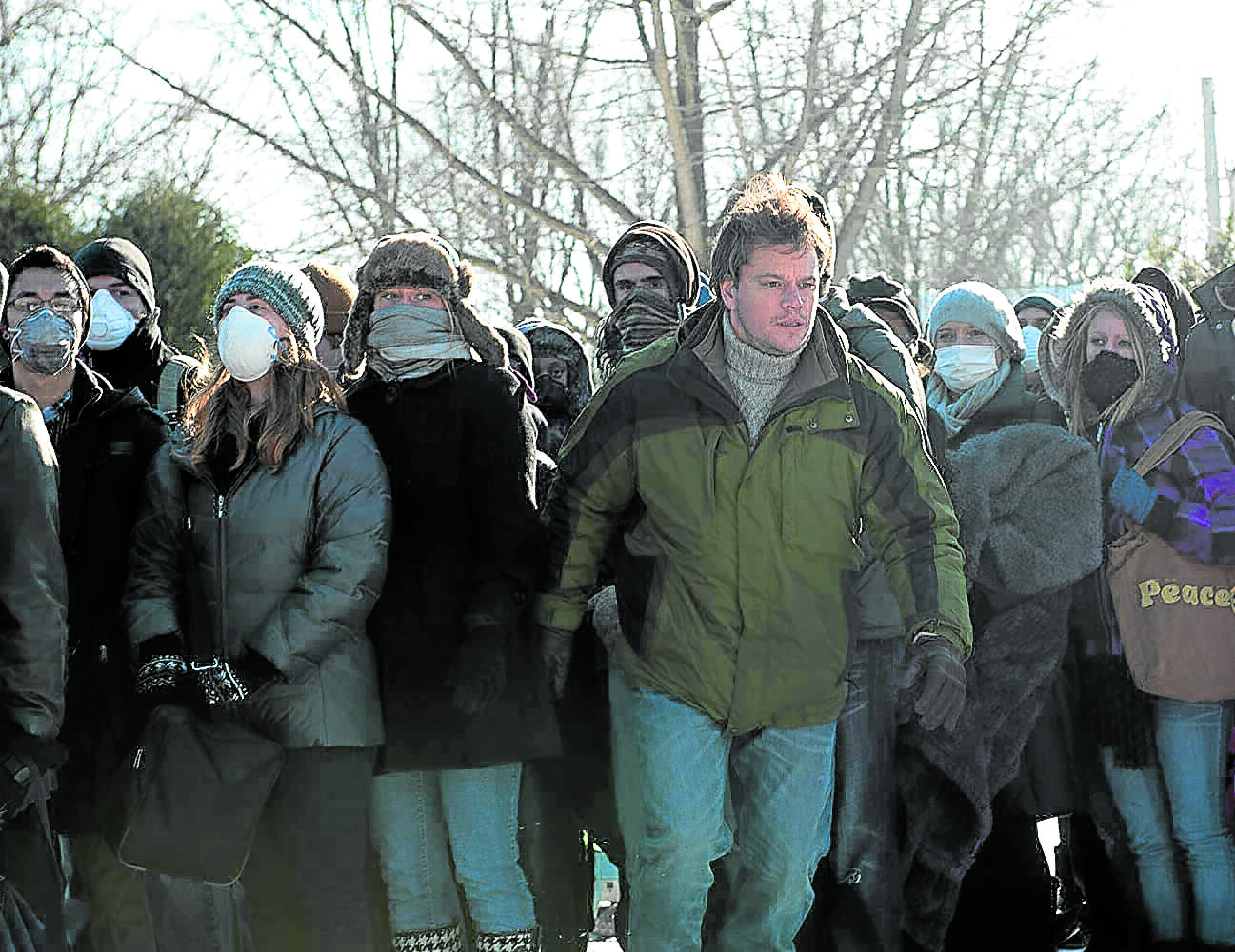
Matt Damon stars in the eerily prescient pandemic drama.
Do you still remember the moment when you decided and thought, I am going to make a movie about a virus?
S: My father and I used to have conversations in the early 2000s, about avian flu. I remember the movie “Outbreak” from when I was young. Something about the end of that movie and the science involved always made me feel uncomfortable, both as a writer and a thinker.
I remember thinking, I want to make a pandemic movie, but I wanted to be guided by the latest science.
On the day that we wrapped “The Informant!,” I remember Steven coming to me and saying, “What do you want to do next?” I pitched him “Contagion.” I got halfway through and he said, “I’m in.”
Dr. Lipkin, when do you think can we come up with a Covid-19 vaccine?
I: I think that we are going to get there (a vaccine) in a year.
One of the movie’s characters, played by Jude Law, is a sinister blogger and a conspiracy theorist who spreads fear and misinformation. Can you discuss the danger that some of these bloggers pose in these pandemic times?
S: It has only gotten worse. And it’s not just bloggers. Unfortunately, now it’s also people in the Federal government. Ian will probably agree that it’s hard enough fighting the disease and to have to now also fight misinformation, especially misinformation that is relying on xenophobia, on incredible political divides that have existed in this country before this thing happened. It makes the job of someone like Ian’s incredibly difficult … because once you get this misinformation out there, it changes people’s behaviors and makes the situation potentially more dangerous.
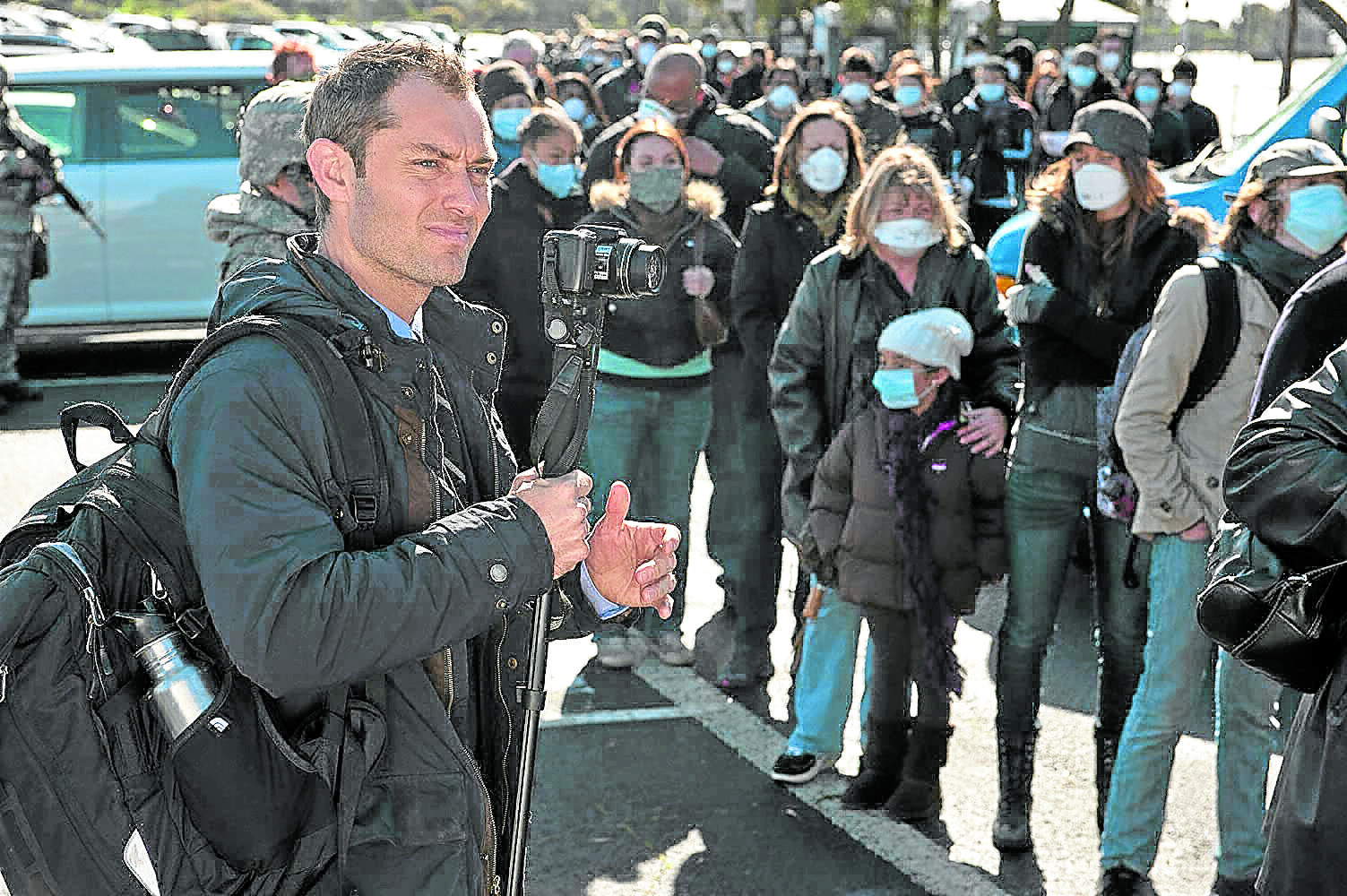
Jude Law plays a slimy blogger.
Can you talk about how it’s likely not a question of if, but when, another pandemic is going to happen?
I: The first pandemic I encountered was HIV. And we had an influenza pandemic in the 2010s. It’s not the first pandemic and it’s not going to be the last.
If you look at the frequency with which these outbreaks occur, it seems to me to be increasing, on the order of every three to five years.
So, I am hoping that people will carry forward the lessons of the wild animal markets, data sharing and improvements for platforms of vaccines so that when the next one comes, we’ll be in better shape.
S: I do think as long as we are in a circumstance where we don’t have testing, we can’t know who is sick, [so] it’s not a great idea to shake hands or kiss people.
Larry Brilliant, who is an epidemiologist, has taught me that nodding to people is totally acceptable.
In these pandemic movies, the source of the virus is always outside of the First World. Is that really rooted in reality?
S: [From] just speaking to Dr. Lipkin and … different epidemiologists, I learned that this reliance on wet markets in China is a problem, and it was the source of SARS. But there are diseases that come from all over the world.
So, it’s not as easy as saying that we are blaming the Third World because frequently, the development of these wild places is done in poor countries, but done under a banner of industrial colonialism.
That being said, there are diseases that have come from America, as well.
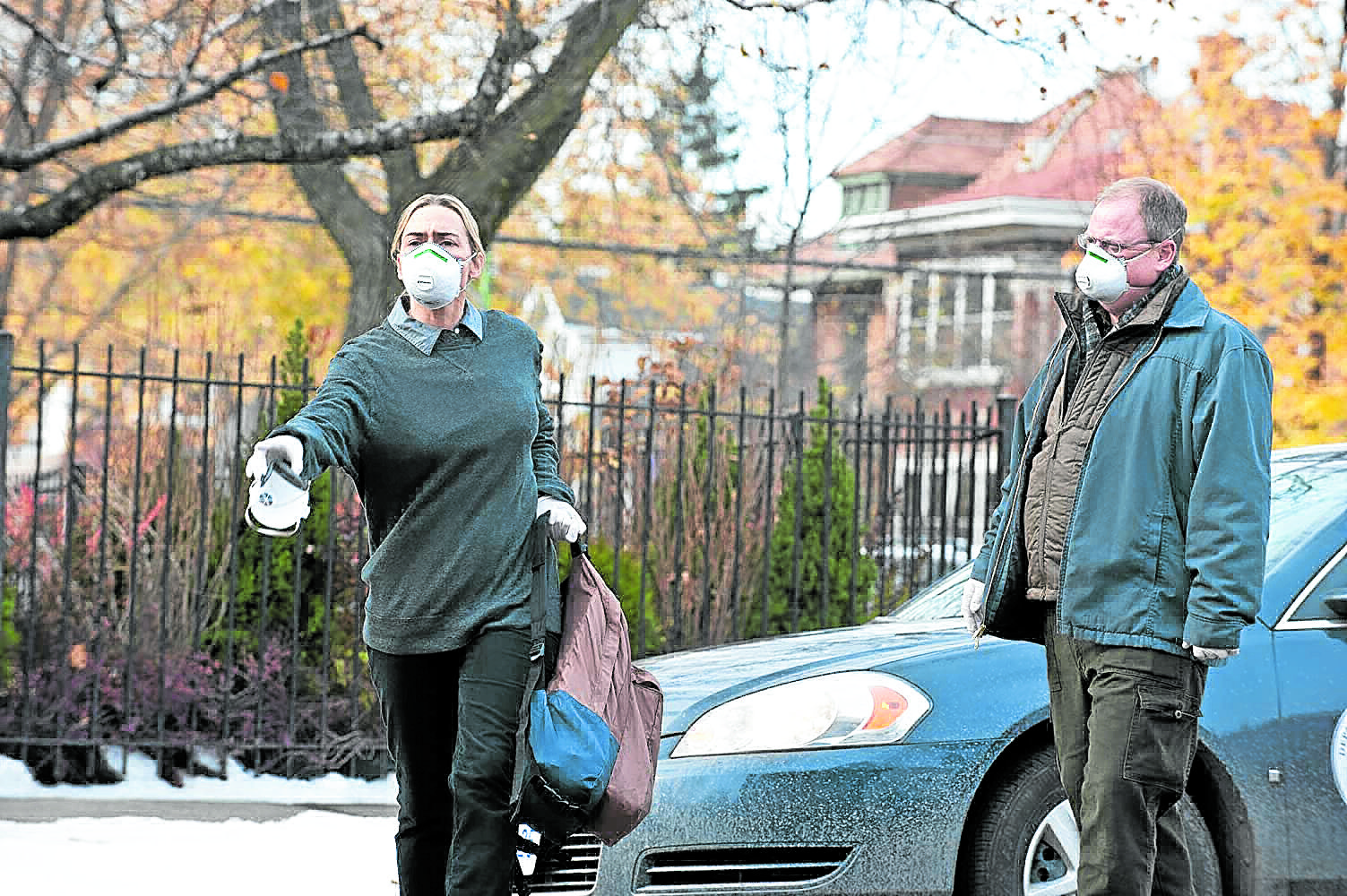
Kate Winslet (left) and Larry Clarke
Why do you think many Covid-19 carriers are asymptomatic? Is that common in other types of viruses?
I: The answer is no. It’s unusual that so many people are asymptomatic. Why, we don’t know yet.
There are several theories on how the coronavirus came about. Is it confirmed that it definitely came from an animal?
S: I spent a lot of time every week speaking to scientists, making sure that they’re teaching me what I should be saying to you. There isn’t a single legitimate scientist that I know of, that I am in contact with, who has any reason to believe this is anything but what they would call a zoonotic virus.
What that means is that it came from an animal. Throughout history, we see viruses jump. There are seven coronaviruses that affect human beings. Four of them are like the common cold. One is SARS, which is deadly.
So it does not seem strange to me that there could be a new virus that came from a bat that would have affected humans. I think it’s a bad idea for us to continue to give credence to conspiracy theories, because it keeps us from focusing on what the preponderance of science groups say is true and what we have learned historically.
What are you working on now? Will it probably be going to impact us too someday?
S: I’m working on a couple of different projects, but the one that I hope and is relevant to this, is an anthology series for Apple TV Plus about climate change, which I would encourage you to think about.
We have scientists telling us that this is a real threat, that bad things are going to happen, and again, we aren’t making the appropriate investments as a society to ward off the worst of it. One of the things that we are going to see with climate change is an increased series of pandemic events.